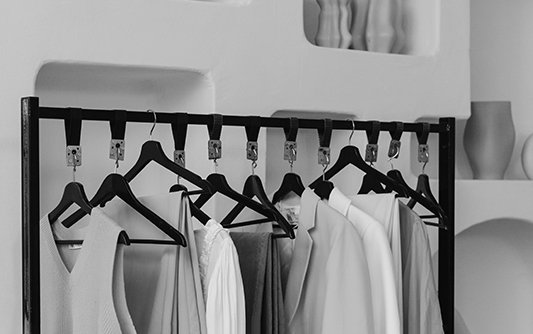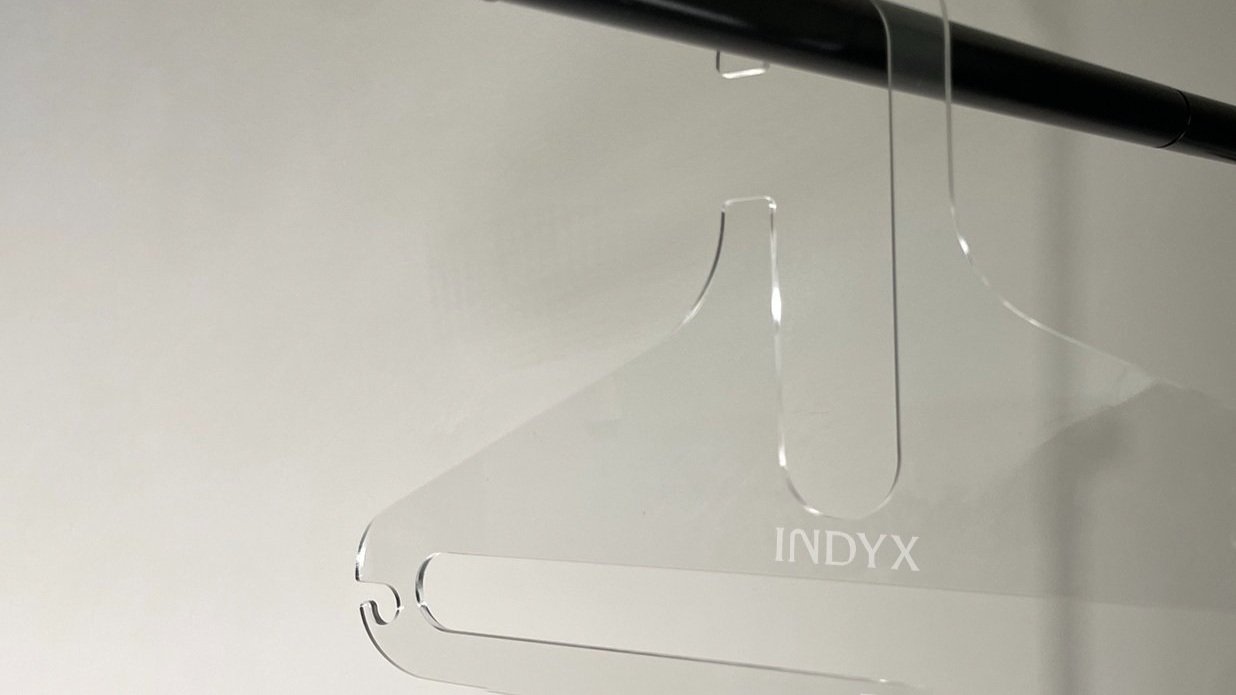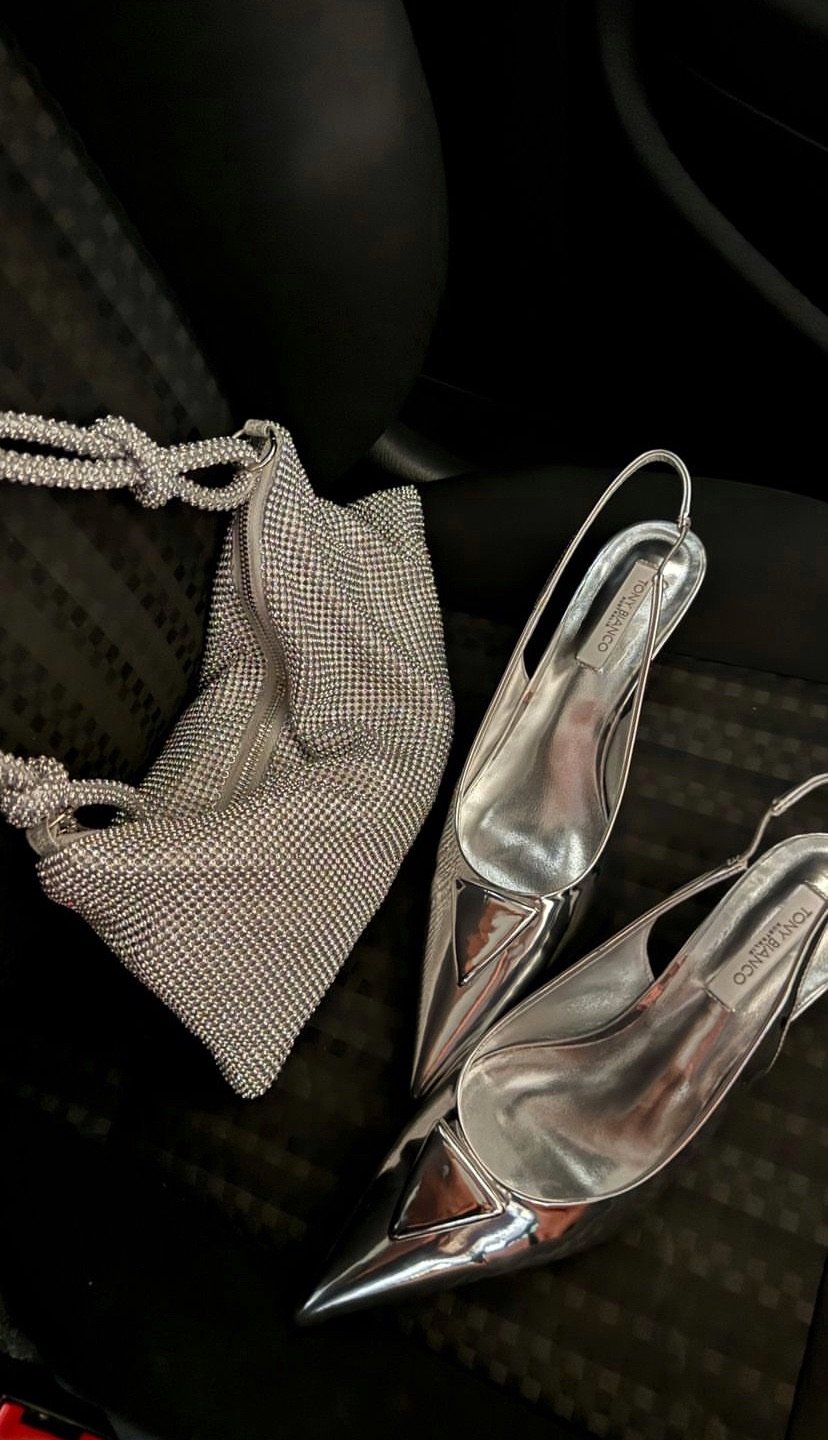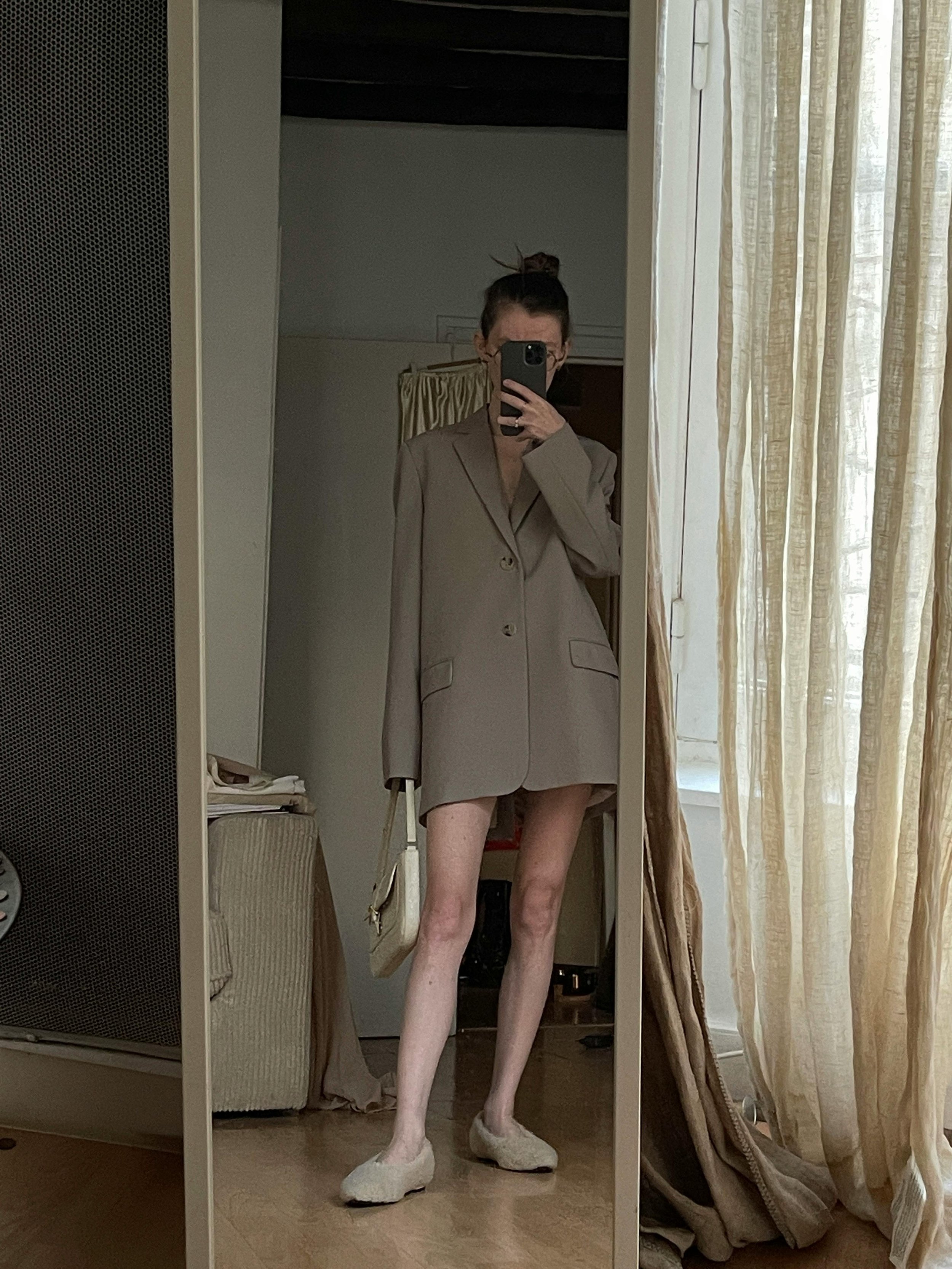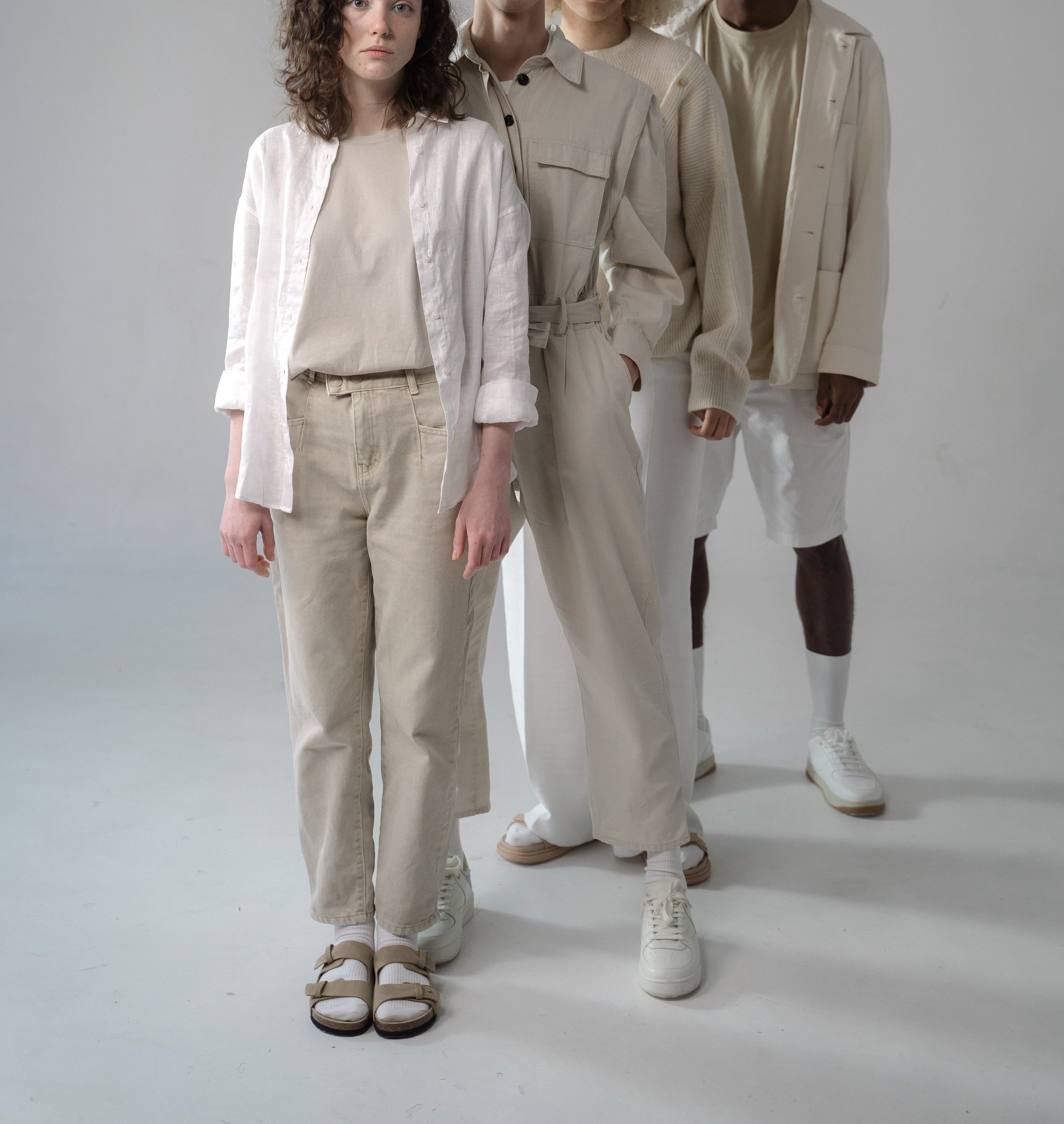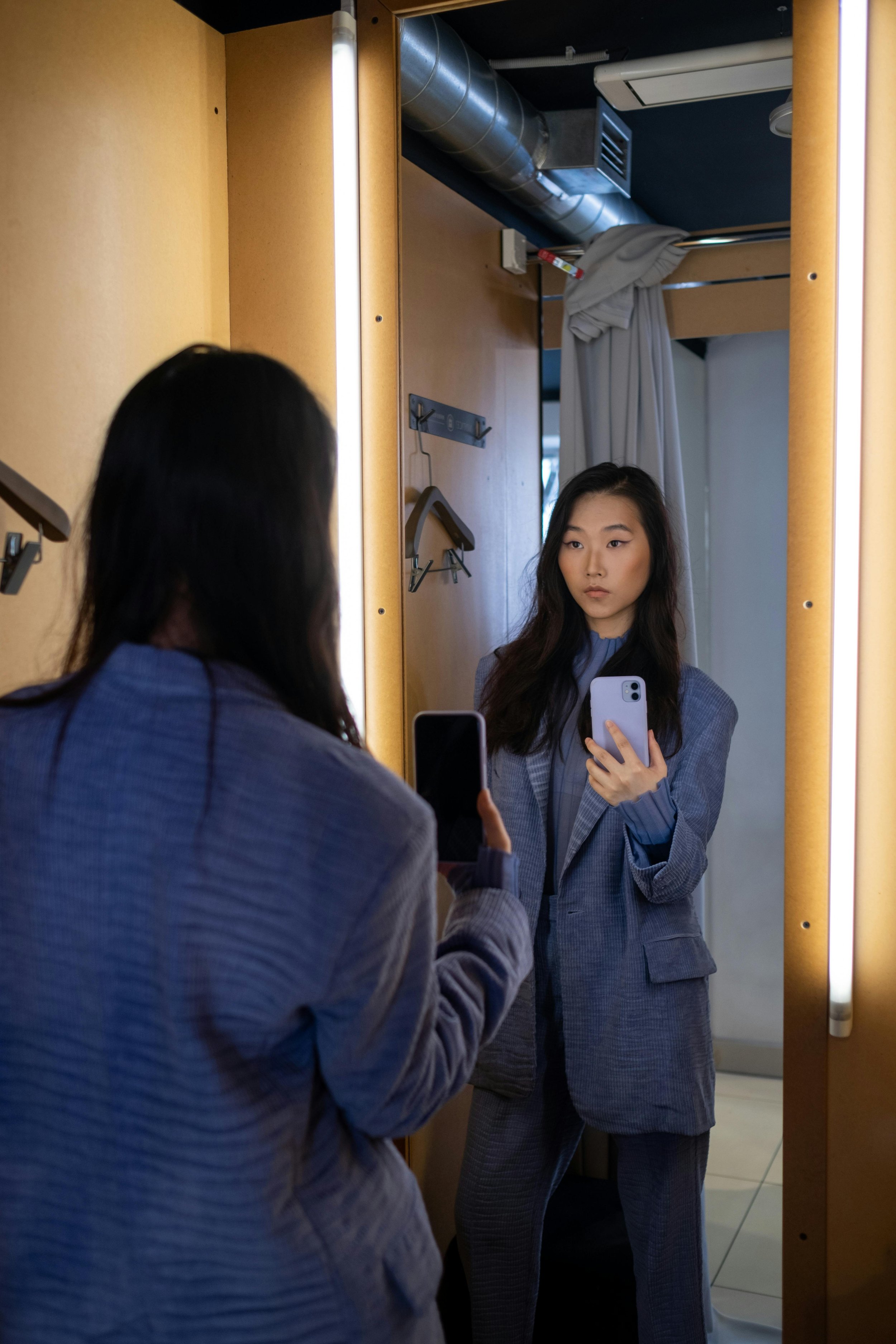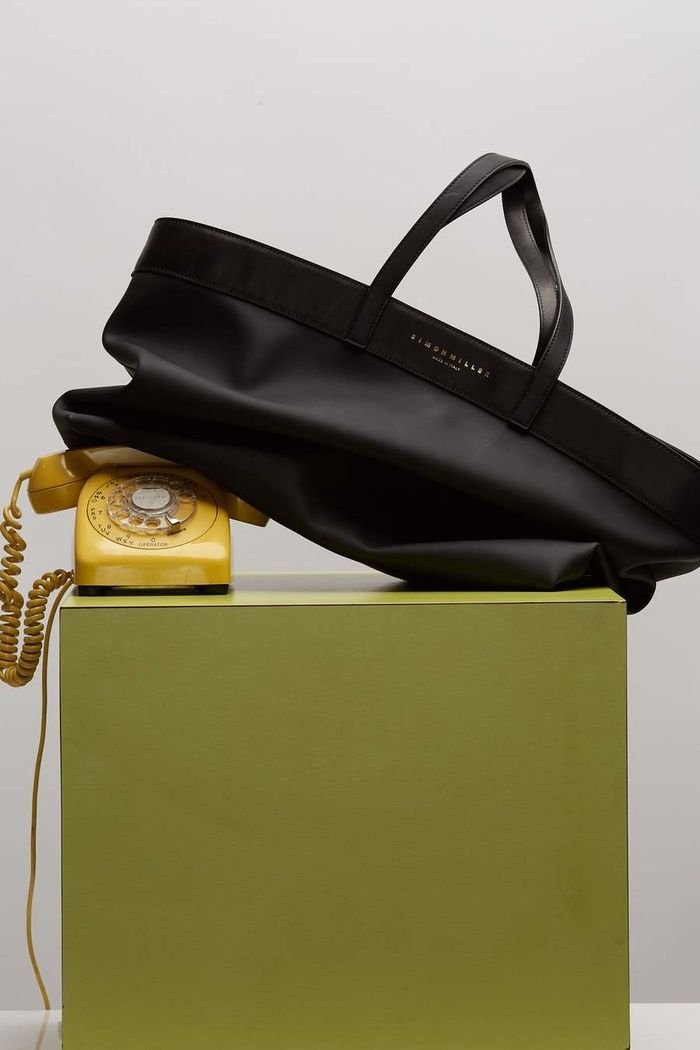What We All Have Wrong About Sustainable Fashion
Let’s face it: the world of sustainable fashion has become an total morass of information and - in my opinion - misinformation. This unfortunately tends to happen when companies and other individuals who profit from selling you stuff (read: social media influencers) realize that they can cleverly co-opt the language of sustainability or social justice to…sell you more things.
It has all resulted in a big misunderstanding that sustainable fashion just means buying more from the right “sustainable” fashion brands, when that almost couldn’t be farther from the truth!
The good news? You don’t need to buy a single piece of clothing from one of these “sustainable” brands in order to participate in sustainable fashion. True sustainable fashion is free, and something that everyone can be a part of just by shifting your mindset towards your wardrobe.
Ready to dive in? Let’s unlearn and relearn what sustainable fashion truly is (and, isn’t) and how exactly you can be a part of it.
What Is Sustainable Fashion?
Sustainable fashion is fashion that minimizes negative impact on people and the planet. It is a system that is conscious about our current rate of consumption, so that adequate resources can be sustained for future generations. It is a mindset, not a binary.
It’s important to note two things in particular about this definition. First, is that we’re talking dual impacts here - people and the planet. Too often we focus only on the environmental impacts of fashion and forget the people in the equation. But earning an unethically low wage is absolutely not sustainable for the people working within this fashion system.
We also need to accept that the best we can do here is minimize negative impact - not eliminate it. Especially when it comes to the environmental impact of fashion, it is a hard truth that it is *always* going to be more sustainable to just…not produce a new thing at all. There is no silver bullet that magically solves the problem - and especially not any marketed by fashion brands. So the name of the game here is much more about progress towards more responsible choices than a binary where certain products or brands are deemed as “sustainable” and others not.
What Sustainable Fashion Isn’t
Or, common misconceptions about sustainable fashion.
When trying to understand what sustainable fashion really is, it can be super helpful to break down what it isn’t. There are *so* many misconceptions out there that focus us on all the wrong things, so let’s take a look at a few of the more common ones we hear:
Sustainable fashion is all about how something is made
Yes, how an item is made is important. But, it is only one small piece of a much bigger picture, with overconsumption as the elephant in the room.
It’s great if your jeans were made from organic cotton grown in the maker’s backyard, dyed with hand-pressed beet juice (also from the backyard), and sewn together by workers paid $100 an hour plus full benefits and free childcare. But all of that doesn’t matter one bit if you wear those jeans once, decide you actually hate them and throw them out.
This is obviously an extreme example, but the same point holds with the Reformation dress that supposedly “saved” 8 lbs of carbon and 14 gallons of water, but sits in the back of your closet after you wore it to that one wedding. Harsh, but fair.
Not to go too conspiracy-theory on you, but there is a reason we have become so wrongly hyper-focused on production sustainability: because it is the only thing that fashion brands can focus on without being in direct conflict with their financial incentives.
Brands and retailers are set up to one thing, and one thing only: to sell you things. Ideally, lots and lots of things. It would be completely against their business interests to tell you to buy less, which is the real answer to the larger problem. So, they focus on what they can control while still selling you just as much stuff, which is how the stuff is made. But this is just putting nice curtains on a window overlooking…a landfill.
Focusing on production sustainability is also frankly quite appealing, because it absolves us of responsibility. It tricks us into thinking that as long as we buy from the “right” brands, we don’t have to change anything else about how we’re consuming. It’s easy. Which, coincidentally, is exactly what those greenwashing brands want us to feel.
If you take nothing else from this article, take this: sustainable fashion is a mindset. It means being mindful about where your clothes come from - but it also means buying less and wearing it more so that your overall fashion footprint is reduced.
Sustainable fashion is only about the environment
Taking a step back, why do we care about the environment in the first place? Well, because if we consume resources and pollute at so high a rate that we poison the Earth, that is a huge problem for the people that live here. Aka, the entire human race.
Concern for the environment is - or at least should be - all about making sure that resources are available for current and future generations of *people* all around the world to live and sustain themselves. And so, sustainability is first and foremost about people.
This means that we should care just as much about how the people who make our clothes today are being treated as we do about the carbon footprint or chemical pollution of the things that are produced by this process.
Sustainable fashion is the opposite of fast fashion
The trouble here is when folks equate “sustainable fashion” and “fast fashion” with certain brands, simplifying the equation to something like Zara = fast fashion = bad, and say Everlane = sustainable fashion = good.
When again, we should be thinking of sustainable fashion and fast fashion mindsets.
The methods of fast fashion brands - constantly selling huge volumes of low-quality, trendy items at unethically low prices - certainly aren’t sustainable. But, the paradox is that you can totally shop fast fashion with a sustainable fashion mindset.
If you’re only buying just a few (say, like 5!) new items a year, are highly intentional about how they fit in your wardrobe, and wearing them to death over years and years, then that is living sustainable fashion even while shopping at Zara. I know that this is a potentially *hot take*.
Conversely, it is entirely possible to consume “sustainable fashion” in an unsustainable way with a fast fashion mindset. Remember that aforementioned Reformation dress sitting in the back of your closet?
So, I’d say that fast fashion and sustainable fashion mindsets are near opposites. But, there is no such thing as an inherently sustainable brand.
Sustainable fashion means I need to buy a whole new wardrobe from “sustainable” brands
Absolutely not! In fact, that is one of the least sustainable things you could do. Sustainable fashion means wearing what you already have in your closet, even if your closet is full of Shein.
Sustainable fashion is boring
A lot of people have a very specific picture in their heads of what “sustainable fashion” looks like. Think: flowy neutral frocks in fabrics like linen or hemp. Overalls, chore coats, & Birkenstocks. I personally like to call this “crunchy” fashion. And hey - there’s absolutely no problem with it if that’s your style! But for many of us, it isn’t.
What some people think all sustainable fashion looks like:
But as we’ve already discussed, sustainable fashion is a mindset - which also means that it isn’t tied to a particular brand or look. This means that nearly anything can be sustainable fashion. It just depends on how you are sourcing it, and how you are treating it once it’s in your care. You love sequin dresses and go-go boots? Buy them secondhand from a vintage store, and that is sustainable fashion. Found the perfect pair of jeans from a department store brand? That’s fine, just make sure that you’re not duplicating something you already have and that you’ll wear them often for years to come.
And, if you’re really looking to buy new, there truly is a “sustainable fashion” brand out there for everyone, of every size and with every kind of style. But let’s call them “better” brands, instead of “sustainable” brands.
By nature of their smaller size, these brands can sometimes be harder to find. But experts in the space have compiled guides to help you find them. We don’t have our own quite yet because I want to make sure we really put in the work before endorsing any specific brands, but I trust Lakyn Carlton’s Where 2 Shop guide, which you can purchase for just $2.
Sustainable fashion is expensive
Let’s go back to our key point: sustainable fashion is a mindset. It’s not something that you buy, it’s about how you buy and how you approach the things you’ve already bought.
In fact, by necessity poor folks have historically had some of the most sustainable approaches to fashion: they didn’t buy a lot, bought secondhand, repaired what they had, and wore it until it fell apart.
So, sustainable isn’t expensive. Sustainable fashion is affordable for everyone - even completely free!
Sustainable fashion means I can just recycle my clothes whenever I’m done
I’ve got some bad news for you: recycling is (mostly) a lie, especially when it comes to clothing.
Recycling of any kind requires a consistent material input stream. You know how you can’t recycle pizza boxes, because even that residual grease messes up the process? It’s the same thing with clothing. Except, here the “grease” is anything that isn’t 100% pure material: zippers, buttons, embellishments. Or, even if the material of your clothing is a blend - say, your 2% spandex, 98% cotton jeans - that’s also a no-go.
And, even if it is theoretically possible, all the labor, machinery, and energy it takes to recycle clothing means that it’s currently a very expensive process - making the output material more expensive than just making something with virgin materials. Which means that practically in our capitalist system it doesn’t happen. Globally, just 12% of material used for clothing ends up actually being recycled.
There are some downcyling techniques that transform unwanted textiles into other uses, like insulation. But, the world only needs so much insulation. Much less than the 92 million tons of clothing we are throwing away every single year.
In short: it’s always going to be better and more efficient to actually use a thing in its original form than go through all the effort to transform it into another thing.
Similar to our single-minded focus on production sustainability, the idea of clothing recycling is by-and-large a convenient lie that absolves us of the individual responsibility of actually using the things we buy.
Sustainable fashion is the responsibility of corporations or governments
Remember how sustainability is in *direct* conflict with the profit incentive of corporations? Say it after me: we cannot depend on corporations to solve sustainability. We can push them to adopt more sustainable methods of production - and they may do it, only because it will cost them more money in lost sales not to. But they will never stop relentlessly selling us stuff.
Looking to government to help solve this might be a bit more fruitful, as governments do have the power to implement various regulations and taxes that might shift the equation. But just being a realist here: when was the last time our government implemented effective climate change legislation in a timely manner? We may be waiting a LONG time for this to happen.
Again, both of these solutions are much too focused on production methods when the real problem is consumption. The U.S. government is never going to regulate how much stuff we buy. That just ain’t happening, nor should we want it to. And such a large part of the sustainable fashion equation is what happens after an item is purchased, which is totally under the control of individuals.
And so look, am I blaming individuals for climate change? No. But we all have a part to play in this, and individual actions can add up to a big difference. We can’t sit by and just point fingers at each other as to who should “go first”.
How To Have A More Sustainable Wardrobe
Now that we’ve covered what sustainable fashion is and isn’t, it’s time to look at what practical steps you can take to have a more sustainable wardrobe.
Our definition of sustainable fashion may have been a little bit different from what you’re familiar with or expected So, you’re not going to find us telling you about the “best sustainable brands” you should and shouldn’t shop from (but again, if you insist: check Lakyn’s guide).
What you’ll find here is how to tactically put that sustainable fashion mindset into action.
Buy fewer things
This sounds simple on its face, but is probably the hardest for most of us to implement in practice. Because we are so accustomed to our fast fashion pace of consumption, truly buying less requires quite a bit of self-reflection.
Remember that the fashion industry - especially the fast fashion industry - is quite literally designed to make you buy things with as little thought or effort as possible. Unbelievably low prices on thousands of new styles a week, the ability to click add-to-cart in the size and color of your choice, and it ships to your house for free within two days? Shopping that way, you’ll always find something you *think* you want.
Breaking away from that model to buy less will actually require more effort from you. It takes work to define your own personal style so that you’re not tricked into buying things that don’t suit you. It takes judgment to prioritize what limited additions to your wardrobe would give you the most value. It takes effort to validate that those additions fit into your wardrobe in such a way that you’ll actually wear them and know how to style them.
The good news is that we’re here to help with exactly that.
Our Style Workshop is an incredible place to start in defining your unique personal style, and ends by walking you step-by-step through building an intentional wishlist. If you’re looking for a little more 1:1 attention, you can work with one of our stylists with a subscription to The Feed or with a one-off Lookbook to get some totally personalized suggestions on what additions would have the greatest impact on your closet. Just download the Indyx app for free on iOS or Android to get started.
My most tactical suggestion? Start by setting a goal on your consumption. I’ve personally committed to buying only 12 new pieces of clothing this year (1 per month), and it has helped enormously in slowing down and making certain I am evaluating every purchase properly.
Buy secondhand
Every time you replace an item you would have bought new with something bought secondhand, you are effectively preventing a new thing from entering the larger ‘stuff’ ecosystem. There’s almost nothing as sustainable as that.
Is it possible to over-consume secondhand? Of course. All the same self-defeating consumption mindsets can apply here, too. We don’t want to end up with a closet full of secondhand clothes that you…still don’t wear. But, we’re not afraid to say it’s a hell of a lot better than a closet full of new clothes with tags on them.
Rewear what you have
Recall that when it comes to sustainability, the original sin of any item is that it was made at all. But once something is made, the resources it took to make it have a higher and higher “payoff” the more the item is used. You can almost think of rewear as a sign of respect, properly honoring what it took to make the thing.
Rewearing your clothes also has the benefit of slowing down the rate of new items you take in. After all, there are only so many days in a week, and weeks in a year. Every new thing you add is decreasing your ability to rewear what you already have. And, if you are content with wearing and re-wearing your existing wardrobe, then there is no need for shopping and buying new.
But, this doesn’t need to feel restrictive! We’ve been trained to think that the only way to have fun with fashion is to shop, when there is so much more creativity and joy in styling. Styling is a completely different game than shopping - and while nothing can replicate the pure dopamine hit of clicking “checkout”, I know firsthand that styling is so much more satisfying.
Shopping is an often fruitless and frustrating exercise in searching and gathering. You are scanning page after page after page on an endless search for that *one* right thing out of a sea of not-right-at-all things. Sometimes you don’t even know what you’re looking for! Oftentimes you don’t really find anything. It can be exhilarating, but it can also be exhausting.
Styling - at least, in my experience - gets you much more in a creative flow. You’re already picking from a wardrobe of things that (in theory!) you like, fit your style, and fit your body. There is instant gratification in putting together a cool new outfit, right in front of your own eyes.
If you’re feeling that ‘shopping’ itch, challenge yourself to restyle your own wardrobe using Indyx instead. And, again, if you want some help seeing your wardrobe through new eyes, then our styling services are the perfect affordable solution.
Find new owners through resale
If you know you aren’t going to get more use out of a perfectly good item, the most sustainable thing to do is find a new owner for it so they can get use out of it.
Lots of folks have written about it - we did briefly here, too - but the hard truth is that our donation centers are so overflowing with our collective overconsumption that most of the stuff that gets donated doesn’t find happy new owners. We’re lucky if it ends up recycled (see above), but most likely it will get trashed whether that’s here in the U.S. (bad) or overseas (worse).
Resale is the most sure-fire way to ensure that your item is going to someone who actually wants it. Don’t want to profit from it? Price the item low for a quick sale that will make someone’s day and then donate whatever you earn to any charity of your choosing.
Take accountability for disposal
Some things aren’t in good enough condition to be sold or donated. And to be clear: if you don’t feel comfortable reselling something due to the condition, then it isn’t fit to be donated either. That is just passing off the responsibility of properly disposing of the item to someone else, who has to expend even more resources to do so.
And, there is something to be said for experiencing the pain of trashing something first hand. Similar to the idea of paying in cash rather than with a credit card, the direct hit of throwing a piece of (formerly) treasured clothing in your kitchen trash can forms a more visceral memory than dropping it off at Goodwill, even if the end destination is exactly the same.
Trashing things myself has really worked for me in making me more thoughtful and intentional about what I buy (taking us back to #1, buy less), and so I encourage you to do the same.
It might help you think twice about ordering that thing you don’t really need off Amazon. At the very least, it will keep the item in our more highly regulated landfills here in the U.S. where the problem originated, rather than making it the problem of a landfill in Chile or Ghana.
Phewf! I hope this doesn’t feel overwhelming, because the steps you can take to have a more sustainable wardrobe are really quite simple.
If you remember only one thing from this article, let it be this: sustainable fashion is a mindset. It isn’t a brand, or a thing you can buy. You don’t have to make a certain amount of money to afford sustainable fashion. You don’t even need to be able to suss out all of the brands’ conflicting and confusing greenwashing claims. Because the biggest impact comes in how you treat your own things, not where you shop. Let that be empowering! Because it is.
Learn more about why greenwashing happens and our list of greenwashing red flags
-
Sustainable fashion is fashion that minimizes negative impact on people and the planet. It is a mindset that is conscious about our current rate of consumption, so that adequate resources can be sustained for future generations.
Practically, it means buying less, shopping secondhand more, and rewearing what you already have as much as possible.
-
Sustainable fashion is important because we are in a climate crisis and the fashion industry is a top 5 polluter.
-
The methods of fast fashion brands - constantly selling huge volumes of low-quality, trendy items at unethically low prices - certainly aren’t sustainable. But, the paradox is that you can totally shop fast fashion with a sustainable fashion mindset.
If you’re only buying just a few (say, like 5!) new items a year, are highly intentional about how they fit in your wardrobe, and wear them to death over years and years, then that is living sustainable fashion even while shopping at Zara.
-
This is a potentially *hot take*, but we believe that fast fashion can be sustainable, if approached with a sustainable fashion mindset. While how an item is made should certainly be part of the equation, the larger impact of fashion is so much more about how an item is used.
If you’re only buying just a few (say, like 5!) new items a year, are highly intentional about how they fit in your wardrobe, and wear them to death over years and years, then that is living sustainable fashion even while shopping at Zara.
-
The most directly actionable thing that fashion brands can do to be more sustainable is to pay a living wage, all along their supply chain. Shockingly, this isn’t true of many popular brands, and has a huge direct impact on the millions of people working in fashion today.
Companies can also improve their materials and production techniques to minimize the use of resources like land and water, as well as reduce carbon emissions and chemical pollution. They can design products meant to last, both in physical durability and through the trend cycle.
But the hard truth is that overconsumption is by far the biggest impact in fashion sustainability - and companies are not financially incentivized to change this. So, making a real dent in sustainable fashion will require us to also change our patterns of consumption.
Devon is a co-founder of Indyx and currently leads Growth for the company from San Francisco. She enjoys admiring other people’s gardens and sleeping in with her French Bulldog, Reggie.










